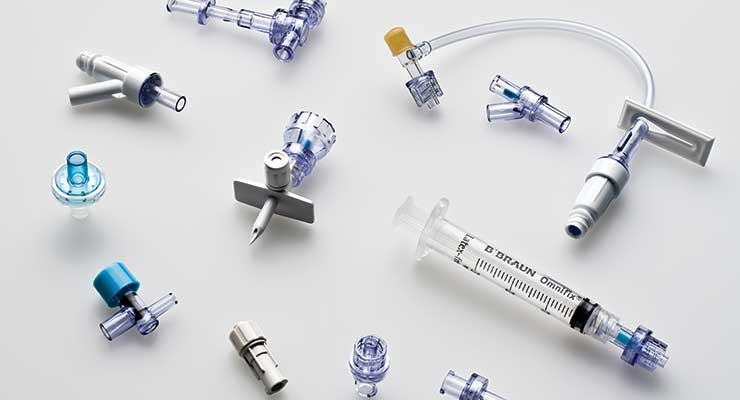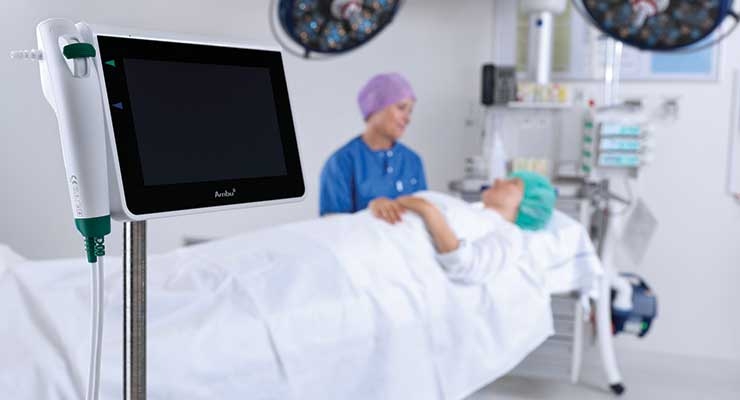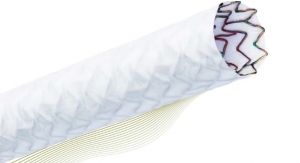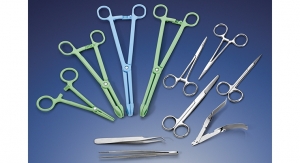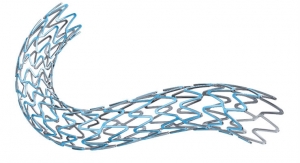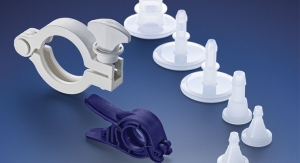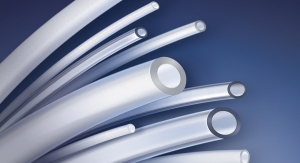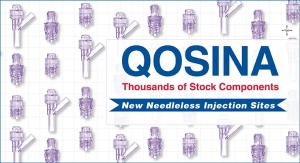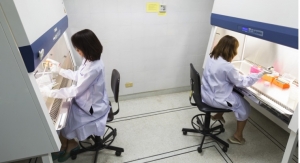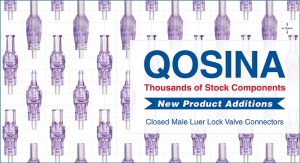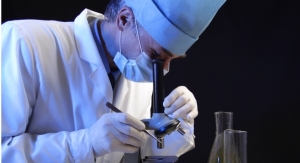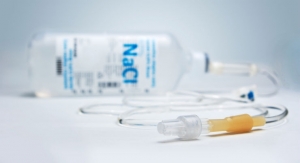Michael Barbella, Managing Editor04.03.19
Timing is everything, as Hesiod once said.
The ancient Greek poet didn’t state it quite that way of course, preferring instead to use language more befitting a didactic artist: “Observe due measure, for right timing is in all things the most important factor.”
Important, indeed. Timing has repeatedly proven itself to be a critical factor in determining success or failure in life, love, and livelihood. Consider for a moment, the role timing played in a U.S. Food and Drug Administration (FDA) investigation of contaminated bronchoscopes.
The probe occurred in 2015, around the same time a deadly superbug outbreak linked to dirty duodenoscopes thrashed hospitals in Chicago, Los Angeles, Philadelphia, Seattle, and Madison, Wis. The outbreak killed at least half dozen patients in southern California and Washington State, and prompted FDA-ordered manufacturer reviews on effective duodenoscope cleaning/disinfection techniques.
The contaminated scopes dominated national headlines for weeks, and fallout from the outbreak continues as the FDA analyzes post-market surveillance study data on duodenoscope reprocessing. Preliminary results released late last year show higher contamination rates for the reprocessed devices, with 3 percent of samples testing positive for “high concern” disease-associated bacteria like E. coli or Pseudomonas aeruginosa.
“Some factors that may contribute to device contamination after reprocessing include device damage and errors in reprocessing,” a Dec. 10 safety communication from the agency states. “The FDA is providing interim results...to inform patients, hospitals, and health care facilities of higher-than-expected contamination rates with duodenoscopes after reprocessing. Facilities and staff that reprocess duodenoscopes are reminded of the importance of manual cleaning prior to disinfection or sterilization and proper servicing of duodenoscopes.”
Manual cleaning also figured prominently into FDA-recommended guidelines for bronchoscope reprocessing, as outlined in a 2015 safety communication that detailed the agency’s investigation of contaminated bronchoscopes. The probe was triggered by a considerable spike in 2014 Medical Device Reports involving bronchoscope-related infections and/or device contamination—an increase that went virtually unnoticed amid all the brouhaha over tainted duodenoscopes.
Also helping the FDA bronchoscope probe slip under the radar was the lower infection risk the devices posed compared with their intestinal counterparts. The FDA said as much in its seven-page safety communication, but noted that bronchoscopes can still negatively impact patient safety.
A study released last year validated the FDA’s public health concerns, finding that most reusable bronchoscopes—commonly used in interventional pulmonary procedures—are contaminated or damaged despite undergoing proper cleaning and disinfection processes.
“The results are worrisome, as patients undergoing bronchoscopy are commonly at high risk for infection due to transplant status, critical illness, or immune-suppression due to malignancy or chronic disease,” the study cautioned.
Funded by 3M Company and supported by sterilization product maker Healthmark Industries, the analysis examined 24 flexible bronchoscopes at three large U.S. hospitals (two contained transplant centers). All the devices were cleaned and disinfected in accordance with institutional practices (protocols included bedside pre-cleaning, leak testing, manual cleaning, sterilization, and high-level disinfection).
The study showed manual cleaning to be virtually pointless, as it failed to remove contaminants from any of the devices. Reprocessing fared better, but still left microbial growth on more than half the scopes (58 percent). All the devices displayed visible irregularities, including retained fluid; brown, red, or oily residue; scratches; damaged insertion tubes and distal ends; and filamentous debris in channels.
Improper handling (nurses using bare hands) and unclean storage cabinets also could have contributed to the contamination found on the devices, researchers noted.
While the analysis is not the first to document proof of cross-contamination in reusable bronchoscopes, it nevertheless exposes the shortcomings of current reprocessing techniques. The study’s authors suggest hospitals overcome those deficiencies by incorporating more single-use or sterilized scopes into their inventories.
The same authors further bolstered the case for single-use/disposable medical devices in a second study released last month comparing the costs of sterile one-off bronchoscopes and their reusable facsimiles. Not surprisingly, the researchers found that hospitals pay more per instrument to disinfect and reuse bronchoscopes than they would purchasing a disposable version. The “real-world cost” for procedures using reprocessed bronchoscopes ranged from $281 to $803 for each instrument—comparable to the $300 list price for sterile single-use scopes, the analysis concluded. Researchers, however, believe the reprocessing tallies are grossly undervalued because they do not include costs associated with essential equipment such as leak testers, irrigation systems, AERs (automated endoscope reprocessors), and drying cabinets. The totals also fail to include personnel time for routine tasks, the authors reported.
“Substantial resources were spent reprocessing bronchoscopes that reached hang time limits,” the researchers concluded. “Based on our bronchoscope reprocessing effectiveness study and this cost study, we recommend that all institutions consider...sterilizing bronchoscopes that are compatible with available sterilization systems; [and] obtaining single-use bronchoscopes for after hours and emergency situations and any procedures that do not require advanced bronchoscopy capabilities...”
In supporting the economics and safety of single-use/disposable bronchoscopes, the two studies invigorated a longstanding debate over the merits of one-off and reprocessed medical devices.
Each option has its benefits: Disposables help lower costs, increase efficiency, and reduce the spread of infection, while reusables can reduce long-term medical spending, generate minimal waste, and uphold the quality of patient care.
Both kinds of devices have played an integral role in healthcare delivery over the last several decades, respectively cultivating thriving industries with reasonably lucrative markets. The single-use sector, valued at $194 billion in 2017, is expected to grow 5.3 percent annually through 2024 to reach $279 billion, according to Zion Market Research data.
The smaller reusables sector, by contrast, is forecast to balloon 15 percent over the same period to reach $5.12 billion, according to Goldstein Research. Major market drivers include the lower price of reprocessed devices (compared to new ones) and pressure to reduce medical waste.
“The increasingly sophisticated nature of professional reprocessing companies results in advantages to hospitals such as a positive impact on medical device quality (data shows reprocessed devices fail less frequently than original devices), lower prices (up to half the cost of buying a device new), and less waste,” contends Daniel J. Vukelich, president of the Washington, D.C.-based Association of Medical Device Reprocessors. “Every time a device is reprocessed, there is one less [device] that must be created, sold, and disposed of. Medical device reprocessing, like generic drugs, provides a check and competitive market pressure to device costs and medical waste.”
Neither the cost nor waste argument, however, is as clear-cut as it appears. While reprocessing seems to have built-in cost reductions (no need for brand new device purchases), there are less obvious expenses associated with these devices, such as hospital reprocessing charges, transportation, disinfection/cleaning supplies, packaging, and human resources. There also are ongoing costs—staff training, machine maintenance, inspections, and certifications—as well as unexpected outlays for treating device-related infections.
Likewise, the ecological advantage of reusable products is clouded by the use of harsh chemical disinfectants (mercury and other sterilization byproducts are bio-accumulative toxins), and the environmental impact of milling steel. And while disposable devices can indeed be recycled, those that have been contaminated with blood, bodily fluids, secretions, or excretions are considered hazardous materials and thus must be disposed of as medical waste.
One of the main advantages of disposable devices is infection control and prevention—a major coup in the age of value-based healthcare.
“The single most important question in healthcare today is how to improve patient outcomes with the resources available. And as the world population increases and life expectancy expands, the pressure mounts on hospital budgets, workflow efficiency, and ultimately, patient safety,” Lars Marcher, CEO and president of Danish single-use bronchoscope manufacturer Ambu A/S, stated last summer. Marcher’s firm received FDA clearance last spring for its latest disposable bronchoscope model, the Ambu aScope 4.
“Flexible endoscopes raise specific problems because they are costly to purchase, reprocess, and repair; they are not always available when you need them; and their use risks exposing patients to infections,” he continued. “We believe the challenges flexible endoscopy should be addressed with single-use devices and for more than a decade, we have been harnessing the technology. Single-use endoscopy has proven its worth in pulmonary endoscopy and the next step is to bring the advantages of single-use to other clinical areas. There is no doubt in our minds that a new and sterile scope for each and every patient is a great step forward for modern healthcare.”
It’s a smart step too, as the global medical disposables market will increasingly be driven by the prevalence of infectious disease, rising hospitalization rates, an aging population, technological advancements, and a continued focus on patient safety.
To better understand this growing market and its role in the evolving healthcare landscape, Medical Product Outsourcing spoke with several experts over the last few weeks. They included:
Tom Black, vice president, B. Braun OEM Division. B. Braun provides contract manufacturing capabilities focusing on fluid administration and admixture products, kits, valves, catheters and interventional accessories.
Peter J. Randall, president/owner/founder of Middleboro, Mass.-based North Grove Enterprise, a supplier of manufacturing services and hand instrumentation for OEMs. Its single-use products include flexible light sources, bone and cement mixing/delivery devices.
Scott Schoenborn, general manager of Sanmina, an integrated solutions provider within the global electronics manufacturing services market.
Ken Wolcott, director of product development and marketing at Qosina Corp., a Ronkonkoma, N.Y.-based supplier of disposable OEM components to the medical and pharmaceutical industries.
Michael Barbella: What trends are currently impacting the single-use/disposable medical device market? What factor(s) are driving these trends?
Tom Black: The biggest trend in the medical device industry continues to be around reducing costs. We will continue to hear that companies selling into hospital organizations (GPOs, IDNs, etc.) will need to try and sell their products on the value they bring to the patient and the caregivers over the entire management of each patient. But with hospitals working on low margins/profits, the most pressing objective continues to be lower costs. The “commoditization” of medical products is a factor, too. We saw what was considered a shortage in the supply of medical solutions turn into competitive pricing for them and increased options for buyers very quickly. B. Braun is investing heavily into increasing the industry’s capacity for solutions so the shortage does not happen again to patients in need of basic hydration and/or nutritional requirements. From the contract manufacturing arena, we continue to hear customers need to reduce their overall spending in order to increase or at least maintain their margins. The want for bells and whistles has been over, replaced by the need for reduction of manufacturing costs without compromising quality or systemic value. Automation, where volumes justify, and low-cost manual assembly are a must to be able to remain busy in the contract manufacturing sector. Along with competitive pricing, you must be able to provide your partner with all of the associated documentation that is being asked of manufacturers in order for the OEM to support their regulatory requirements. And, the new European MDR is only going to add to that over the next two years. You must be experienced at all of the product development and quality programs in order to support your customers’ now basic needs.
Peter J. Randall: I believe the largest factor is in driving down HAI (hospital-acquired infections). These products are typically provided sterile to the hospitals and can be more time-efficient to use over reusable devices that require cleaning and monitoring for functionality and cleanliness.
Barbella: What are some of the emerging needs currently impacting the single-use/disposable medical devices market?
Ken Wolcott: As a former medical design engineer, I have the perspective of relating to the many challenges engineers face daily. From Qosina’s viewpoint, we notice increased pressure on engineers to improve speed to market, keeping current with the latest material standards, and develop products quickly for new high-growth areas.
To improve speed to market, engineers are constantly trying to streamline each development stage. Qosina is involved with engineering at the earliest stages all the way to production. For nearly 40 years, we have supported product development by providing free samples on most products. But times change and engineers need every edge to increase efficiency. So Qosina is offering user-downloadable 3D CAD models on its website. Now customers can easily input the model into their overall design to test form, fit, and function. This is a complimentary service that can save hours or even days.
Keeping products in compliance with changing standards is unavoidable and an ongoing challenge. As mandatory deadlines approach for implementation of safer material changes or new ISO requirements, engineers must select components that are safe, reliable, and effective. An example of this is the emerging trend of ISO 80369 compliance. This standard centers around the very important topic of preventing misconnections between small-bore connectors used in a variety of applications.
In an effort to improve patient safety, Qosina added a number of ENFit products to its inventory in recent years. ENFit is a line of enteral feeding connectors that meet the ISO 80369-3 standard, which has been developed by the International Organization for Standardization to reduce the risk of small-bore misconnections used in liquid and gas healthcare applications. Qosina continues to expand its ENFit line to meet the needs of clients’ enteral projects and can modify any existing component or build new tooling to suit exact requirements.
Qosina also provides NRFit products that are compliant with ISO 80369-6, which addresses neuraxial applications involving the use of medical devices intended to administer medications to neuraxial sites, wound infiltration anesthesia delivery, and other regional anesthesia procedures, or to monitor or remove cerebro-spinal fluid for therapeutic or diagnostic purposes.
Currently, Qosina is actively bringing in components that are ISO 80369-7 compliant, which specifies dimensions and guidelines for the design and function of connections used in intravascular applications or hypodermic connections, again intended to reduce the risk of small-bore misconnections.
In addition to material and ISO compliance, we see an emergence of single-use disposable products for the bioprocessing industry. Qosina is a member of the Bio-Process Systems Alliance (BPSA), an organization focused on supporting single-use manufacturing technologies used in the production of biopharmaceuticals and vaccines. This space is emerging as end-users realize saving time and money on cleaning and validation is very important. Along with rapid turnaround between batches, single-use also reduces water and eliminates cross-contamination. Pharmaceutical manufacturers also have greater flexibility on the production floor when using mobile single-use designs over pre-existing stainless-steel facilities. Single-use equipment can be duplicated with less effort and cost and can help keep manufacturing closer to end-users. Stainless steel facilities take time to build, so single-use is cheaper and quicker. Qosina continues to add new bioprocessing components to support the growing need.
Barbella: What challenges affect the development and manufacture of single-use/disposable medical devices? How does your company meet and overcome these challenges?
Randall: 1) Pricing—to be cost-competitive, products need to be manufactured and validated in high volumes in order to compete with reusable products, which typically have a life cycle of three to five years or longer before replacement. 2) Materials must be selected that can balance functional capabilities for a specific purpose but be minimal in cost and can also be sterilized in a cost-effective way. Some materials can be damaged using standard lower cost processes so therefore must use a higher and less affordable means to sterilize the product.
Wolcott: Along with samples and 3D CAD models, engineers love easy access to documentation. Supporting documentation is a necessary evil to an engineer. Sure, we want to make sure we are specifying the correct part, but most of us do not enjoy the process of contacting each vendor to get the supporting documents for a regulatory filing or design history file. Qosina provides customers with free, web-based, downloadable detailed component drawings and material specifications that allow them to easily implement our components into their design.
Barbella: What is driving innovation in single-use/disposable medical devices?
Scott Schoenborn: Some of the innovation we are seeing is in the newer, engineered resins being used for medical devices. These are high performance plastics with unique characteristics. The combination of these new resins, with new molding technologies like zero compression molding, enable the fabrication of much smaller components with significantly improved mechanical performance. Zero compression molding preserves the molecular structure of some of these high-performance plastics during the molding process.
Second, it is important to keep up with all of the specialty resins that have emerged over the past several years, especially those proven for use with medical devices. A customer may specify “polycarbonate” on a drawing. But the customer may not realize how many polycarbonate plastics are available, and all of their unique characteristics. These characteristics go beyond mechanical characteristics. For example, some components we fabricate transmit light. For a recent customer, we evaluated several polycarbonates to determine which resin had the right combination of optical and mechanical properties.
Randall: Patient awareness and safety. It is much easier today for patients to navigate online and find information about procedures/trends/hospital and surgeon ratings. Also, companies continue to innovate and look for further opportunities that can create future value and provide additional revenues to build upon.
Barbella: What factors are considered in the design of single-use/disposable medical devices? Have they changed in the past five or 10 years?
Black: The factors considered in the design of disposable medical devices are the improvement of patient outcomes over the entire healthcare experience, including caregivers. If your products can reduce the overall spend for a hospital—in money and time—while improving the outcome of the patient and the time required for caregivers, then you should have successful results. It is also important to be able to maintain, if not reduce, your costs and pricing for as long as possible. Supply chain management is an essential practice for contract manufacturers in order to manage pricing, quality, and sustainability. Product changes are a drain on resources. OEMs want to use their resources for product development or enhancements, not for just maintenance of existing products. Being able to manage their existing business without creating noise is a must for contract manufacturers when servicing their OEMs. Product development must take into consideration the ability to maintain the product lifecycle with no risk to sustaining supply.
Wolcott: The old mantra of “make it faster, better, and cheaper” seems to be relevant year after year in many industries. As medical device engineers, we always have to consider the regulatory requirements’ impact on lead times. As if that is not enough, rapid developments in healthcare treatment from competition puts pressure on us to go from prototype to launch in the shortest time possible. Scaling up from prototype to low-volume to high-volume may need to occur faster than ever before. Designing for scalability must be considered, so it is prudent to choose a supply chain that can adjust to your needs and provide support from product conception to large-scale delivery.
The ancient Greek poet didn’t state it quite that way of course, preferring instead to use language more befitting a didactic artist: “Observe due measure, for right timing is in all things the most important factor.”
Important, indeed. Timing has repeatedly proven itself to be a critical factor in determining success or failure in life, love, and livelihood. Consider for a moment, the role timing played in a U.S. Food and Drug Administration (FDA) investigation of contaminated bronchoscopes.
The probe occurred in 2015, around the same time a deadly superbug outbreak linked to dirty duodenoscopes thrashed hospitals in Chicago, Los Angeles, Philadelphia, Seattle, and Madison, Wis. The outbreak killed at least half dozen patients in southern California and Washington State, and prompted FDA-ordered manufacturer reviews on effective duodenoscope cleaning/disinfection techniques.
The contaminated scopes dominated national headlines for weeks, and fallout from the outbreak continues as the FDA analyzes post-market surveillance study data on duodenoscope reprocessing. Preliminary results released late last year show higher contamination rates for the reprocessed devices, with 3 percent of samples testing positive for “high concern” disease-associated bacteria like E. coli or Pseudomonas aeruginosa.
“Some factors that may contribute to device contamination after reprocessing include device damage and errors in reprocessing,” a Dec. 10 safety communication from the agency states. “The FDA is providing interim results...to inform patients, hospitals, and health care facilities of higher-than-expected contamination rates with duodenoscopes after reprocessing. Facilities and staff that reprocess duodenoscopes are reminded of the importance of manual cleaning prior to disinfection or sterilization and proper servicing of duodenoscopes.”
Manual cleaning also figured prominently into FDA-recommended guidelines for bronchoscope reprocessing, as outlined in a 2015 safety communication that detailed the agency’s investigation of contaminated bronchoscopes. The probe was triggered by a considerable spike in 2014 Medical Device Reports involving bronchoscope-related infections and/or device contamination—an increase that went virtually unnoticed amid all the brouhaha over tainted duodenoscopes.
Also helping the FDA bronchoscope probe slip under the radar was the lower infection risk the devices posed compared with their intestinal counterparts. The FDA said as much in its seven-page safety communication, but noted that bronchoscopes can still negatively impact patient safety.
A study released last year validated the FDA’s public health concerns, finding that most reusable bronchoscopes—commonly used in interventional pulmonary procedures—are contaminated or damaged despite undergoing proper cleaning and disinfection processes.
“The results are worrisome, as patients undergoing bronchoscopy are commonly at high risk for infection due to transplant status, critical illness, or immune-suppression due to malignancy or chronic disease,” the study cautioned.
Funded by 3M Company and supported by sterilization product maker Healthmark Industries, the analysis examined 24 flexible bronchoscopes at three large U.S. hospitals (two contained transplant centers). All the devices were cleaned and disinfected in accordance with institutional practices (protocols included bedside pre-cleaning, leak testing, manual cleaning, sterilization, and high-level disinfection).
The study showed manual cleaning to be virtually pointless, as it failed to remove contaminants from any of the devices. Reprocessing fared better, but still left microbial growth on more than half the scopes (58 percent). All the devices displayed visible irregularities, including retained fluid; brown, red, or oily residue; scratches; damaged insertion tubes and distal ends; and filamentous debris in channels.
Improper handling (nurses using bare hands) and unclean storage cabinets also could have contributed to the contamination found on the devices, researchers noted.
While the analysis is not the first to document proof of cross-contamination in reusable bronchoscopes, it nevertheless exposes the shortcomings of current reprocessing techniques. The study’s authors suggest hospitals overcome those deficiencies by incorporating more single-use or sterilized scopes into their inventories.
The same authors further bolstered the case for single-use/disposable medical devices in a second study released last month comparing the costs of sterile one-off bronchoscopes and their reusable facsimiles. Not surprisingly, the researchers found that hospitals pay more per instrument to disinfect and reuse bronchoscopes than they would purchasing a disposable version. The “real-world cost” for procedures using reprocessed bronchoscopes ranged from $281 to $803 for each instrument—comparable to the $300 list price for sterile single-use scopes, the analysis concluded. Researchers, however, believe the reprocessing tallies are grossly undervalued because they do not include costs associated with essential equipment such as leak testers, irrigation systems, AERs (automated endoscope reprocessors), and drying cabinets. The totals also fail to include personnel time for routine tasks, the authors reported.
“Substantial resources were spent reprocessing bronchoscopes that reached hang time limits,” the researchers concluded. “Based on our bronchoscope reprocessing effectiveness study and this cost study, we recommend that all institutions consider...sterilizing bronchoscopes that are compatible with available sterilization systems; [and] obtaining single-use bronchoscopes for after hours and emergency situations and any procedures that do not require advanced bronchoscopy capabilities...”
In supporting the economics and safety of single-use/disposable bronchoscopes, the two studies invigorated a longstanding debate over the merits of one-off and reprocessed medical devices.
Each option has its benefits: Disposables help lower costs, increase efficiency, and reduce the spread of infection, while reusables can reduce long-term medical spending, generate minimal waste, and uphold the quality of patient care.
Both kinds of devices have played an integral role in healthcare delivery over the last several decades, respectively cultivating thriving industries with reasonably lucrative markets. The single-use sector, valued at $194 billion in 2017, is expected to grow 5.3 percent annually through 2024 to reach $279 billion, according to Zion Market Research data.
The smaller reusables sector, by contrast, is forecast to balloon 15 percent over the same period to reach $5.12 billion, according to Goldstein Research. Major market drivers include the lower price of reprocessed devices (compared to new ones) and pressure to reduce medical waste.
“The increasingly sophisticated nature of professional reprocessing companies results in advantages to hospitals such as a positive impact on medical device quality (data shows reprocessed devices fail less frequently than original devices), lower prices (up to half the cost of buying a device new), and less waste,” contends Daniel J. Vukelich, president of the Washington, D.C.-based Association of Medical Device Reprocessors. “Every time a device is reprocessed, there is one less [device] that must be created, sold, and disposed of. Medical device reprocessing, like generic drugs, provides a check and competitive market pressure to device costs and medical waste.”
Neither the cost nor waste argument, however, is as clear-cut as it appears. While reprocessing seems to have built-in cost reductions (no need for brand new device purchases), there are less obvious expenses associated with these devices, such as hospital reprocessing charges, transportation, disinfection/cleaning supplies, packaging, and human resources. There also are ongoing costs—staff training, machine maintenance, inspections, and certifications—as well as unexpected outlays for treating device-related infections.
Likewise, the ecological advantage of reusable products is clouded by the use of harsh chemical disinfectants (mercury and other sterilization byproducts are bio-accumulative toxins), and the environmental impact of milling steel. And while disposable devices can indeed be recycled, those that have been contaminated with blood, bodily fluids, secretions, or excretions are considered hazardous materials and thus must be disposed of as medical waste.
One of the main advantages of disposable devices is infection control and prevention—a major coup in the age of value-based healthcare.
“The single most important question in healthcare today is how to improve patient outcomes with the resources available. And as the world population increases and life expectancy expands, the pressure mounts on hospital budgets, workflow efficiency, and ultimately, patient safety,” Lars Marcher, CEO and president of Danish single-use bronchoscope manufacturer Ambu A/S, stated last summer. Marcher’s firm received FDA clearance last spring for its latest disposable bronchoscope model, the Ambu aScope 4.
“Flexible endoscopes raise specific problems because they are costly to purchase, reprocess, and repair; they are not always available when you need them; and their use risks exposing patients to infections,” he continued. “We believe the challenges flexible endoscopy should be addressed with single-use devices and for more than a decade, we have been harnessing the technology. Single-use endoscopy has proven its worth in pulmonary endoscopy and the next step is to bring the advantages of single-use to other clinical areas. There is no doubt in our minds that a new and sterile scope for each and every patient is a great step forward for modern healthcare.”
It’s a smart step too, as the global medical disposables market will increasingly be driven by the prevalence of infectious disease, rising hospitalization rates, an aging population, technological advancements, and a continued focus on patient safety.
To better understand this growing market and its role in the evolving healthcare landscape, Medical Product Outsourcing spoke with several experts over the last few weeks. They included:
Tom Black, vice president, B. Braun OEM Division. B. Braun provides contract manufacturing capabilities focusing on fluid administration and admixture products, kits, valves, catheters and interventional accessories.
Peter J. Randall, president/owner/founder of Middleboro, Mass.-based North Grove Enterprise, a supplier of manufacturing services and hand instrumentation for OEMs. Its single-use products include flexible light sources, bone and cement mixing/delivery devices.
Scott Schoenborn, general manager of Sanmina, an integrated solutions provider within the global electronics manufacturing services market.
Ken Wolcott, director of product development and marketing at Qosina Corp., a Ronkonkoma, N.Y.-based supplier of disposable OEM components to the medical and pharmaceutical industries.
Michael Barbella: What trends are currently impacting the single-use/disposable medical device market? What factor(s) are driving these trends?
Tom Black: The biggest trend in the medical device industry continues to be around reducing costs. We will continue to hear that companies selling into hospital organizations (GPOs, IDNs, etc.) will need to try and sell their products on the value they bring to the patient and the caregivers over the entire management of each patient. But with hospitals working on low margins/profits, the most pressing objective continues to be lower costs. The “commoditization” of medical products is a factor, too. We saw what was considered a shortage in the supply of medical solutions turn into competitive pricing for them and increased options for buyers very quickly. B. Braun is investing heavily into increasing the industry’s capacity for solutions so the shortage does not happen again to patients in need of basic hydration and/or nutritional requirements. From the contract manufacturing arena, we continue to hear customers need to reduce their overall spending in order to increase or at least maintain their margins. The want for bells and whistles has been over, replaced by the need for reduction of manufacturing costs without compromising quality or systemic value. Automation, where volumes justify, and low-cost manual assembly are a must to be able to remain busy in the contract manufacturing sector. Along with competitive pricing, you must be able to provide your partner with all of the associated documentation that is being asked of manufacturers in order for the OEM to support their regulatory requirements. And, the new European MDR is only going to add to that over the next two years. You must be experienced at all of the product development and quality programs in order to support your customers’ now basic needs.
Peter J. Randall: I believe the largest factor is in driving down HAI (hospital-acquired infections). These products are typically provided sterile to the hospitals and can be more time-efficient to use over reusable devices that require cleaning and monitoring for functionality and cleanliness.
Barbella: What are some of the emerging needs currently impacting the single-use/disposable medical devices market?
Ken Wolcott: As a former medical design engineer, I have the perspective of relating to the many challenges engineers face daily. From Qosina’s viewpoint, we notice increased pressure on engineers to improve speed to market, keeping current with the latest material standards, and develop products quickly for new high-growth areas.
To improve speed to market, engineers are constantly trying to streamline each development stage. Qosina is involved with engineering at the earliest stages all the way to production. For nearly 40 years, we have supported product development by providing free samples on most products. But times change and engineers need every edge to increase efficiency. So Qosina is offering user-downloadable 3D CAD models on its website. Now customers can easily input the model into their overall design to test form, fit, and function. This is a complimentary service that can save hours or even days.
Keeping products in compliance with changing standards is unavoidable and an ongoing challenge. As mandatory deadlines approach for implementation of safer material changes or new ISO requirements, engineers must select components that are safe, reliable, and effective. An example of this is the emerging trend of ISO 80369 compliance. This standard centers around the very important topic of preventing misconnections between small-bore connectors used in a variety of applications.
In an effort to improve patient safety, Qosina added a number of ENFit products to its inventory in recent years. ENFit is a line of enteral feeding connectors that meet the ISO 80369-3 standard, which has been developed by the International Organization for Standardization to reduce the risk of small-bore misconnections used in liquid and gas healthcare applications. Qosina continues to expand its ENFit line to meet the needs of clients’ enteral projects and can modify any existing component or build new tooling to suit exact requirements.
Qosina also provides NRFit products that are compliant with ISO 80369-6, which addresses neuraxial applications involving the use of medical devices intended to administer medications to neuraxial sites, wound infiltration anesthesia delivery, and other regional anesthesia procedures, or to monitor or remove cerebro-spinal fluid for therapeutic or diagnostic purposes.
Currently, Qosina is actively bringing in components that are ISO 80369-7 compliant, which specifies dimensions and guidelines for the design and function of connections used in intravascular applications or hypodermic connections, again intended to reduce the risk of small-bore misconnections.
In addition to material and ISO compliance, we see an emergence of single-use disposable products for the bioprocessing industry. Qosina is a member of the Bio-Process Systems Alliance (BPSA), an organization focused on supporting single-use manufacturing technologies used in the production of biopharmaceuticals and vaccines. This space is emerging as end-users realize saving time and money on cleaning and validation is very important. Along with rapid turnaround between batches, single-use also reduces water and eliminates cross-contamination. Pharmaceutical manufacturers also have greater flexibility on the production floor when using mobile single-use designs over pre-existing stainless-steel facilities. Single-use equipment can be duplicated with less effort and cost and can help keep manufacturing closer to end-users. Stainless steel facilities take time to build, so single-use is cheaper and quicker. Qosina continues to add new bioprocessing components to support the growing need.
Barbella: What challenges affect the development and manufacture of single-use/disposable medical devices? How does your company meet and overcome these challenges?
Randall: 1) Pricing—to be cost-competitive, products need to be manufactured and validated in high volumes in order to compete with reusable products, which typically have a life cycle of three to five years or longer before replacement. 2) Materials must be selected that can balance functional capabilities for a specific purpose but be minimal in cost and can also be sterilized in a cost-effective way. Some materials can be damaged using standard lower cost processes so therefore must use a higher and less affordable means to sterilize the product.
Wolcott: Along with samples and 3D CAD models, engineers love easy access to documentation. Supporting documentation is a necessary evil to an engineer. Sure, we want to make sure we are specifying the correct part, but most of us do not enjoy the process of contacting each vendor to get the supporting documents for a regulatory filing or design history file. Qosina provides customers with free, web-based, downloadable detailed component drawings and material specifications that allow them to easily implement our components into their design.
Barbella: What is driving innovation in single-use/disposable medical devices?
Scott Schoenborn: Some of the innovation we are seeing is in the newer, engineered resins being used for medical devices. These are high performance plastics with unique characteristics. The combination of these new resins, with new molding technologies like zero compression molding, enable the fabrication of much smaller components with significantly improved mechanical performance. Zero compression molding preserves the molecular structure of some of these high-performance plastics during the molding process.
Second, it is important to keep up with all of the specialty resins that have emerged over the past several years, especially those proven for use with medical devices. A customer may specify “polycarbonate” on a drawing. But the customer may not realize how many polycarbonate plastics are available, and all of their unique characteristics. These characteristics go beyond mechanical characteristics. For example, some components we fabricate transmit light. For a recent customer, we evaluated several polycarbonates to determine which resin had the right combination of optical and mechanical properties.
Randall: Patient awareness and safety. It is much easier today for patients to navigate online and find information about procedures/trends/hospital and surgeon ratings. Also, companies continue to innovate and look for further opportunities that can create future value and provide additional revenues to build upon.
Barbella: What factors are considered in the design of single-use/disposable medical devices? Have they changed in the past five or 10 years?
Black: The factors considered in the design of disposable medical devices are the improvement of patient outcomes over the entire healthcare experience, including caregivers. If your products can reduce the overall spend for a hospital—in money and time—while improving the outcome of the patient and the time required for caregivers, then you should have successful results. It is also important to be able to maintain, if not reduce, your costs and pricing for as long as possible. Supply chain management is an essential practice for contract manufacturers in order to manage pricing, quality, and sustainability. Product changes are a drain on resources. OEMs want to use their resources for product development or enhancements, not for just maintenance of existing products. Being able to manage their existing business without creating noise is a must for contract manufacturers when servicing their OEMs. Product development must take into consideration the ability to maintain the product lifecycle with no risk to sustaining supply.
Wolcott: The old mantra of “make it faster, better, and cheaper” seems to be relevant year after year in many industries. As medical device engineers, we always have to consider the regulatory requirements’ impact on lead times. As if that is not enough, rapid developments in healthcare treatment from competition puts pressure on us to go from prototype to launch in the shortest time possible. Scaling up from prototype to low-volume to high-volume may need to occur faster than ever before. Designing for scalability must be considered, so it is prudent to choose a supply chain that can adjust to your needs and provide support from product conception to large-scale delivery.

